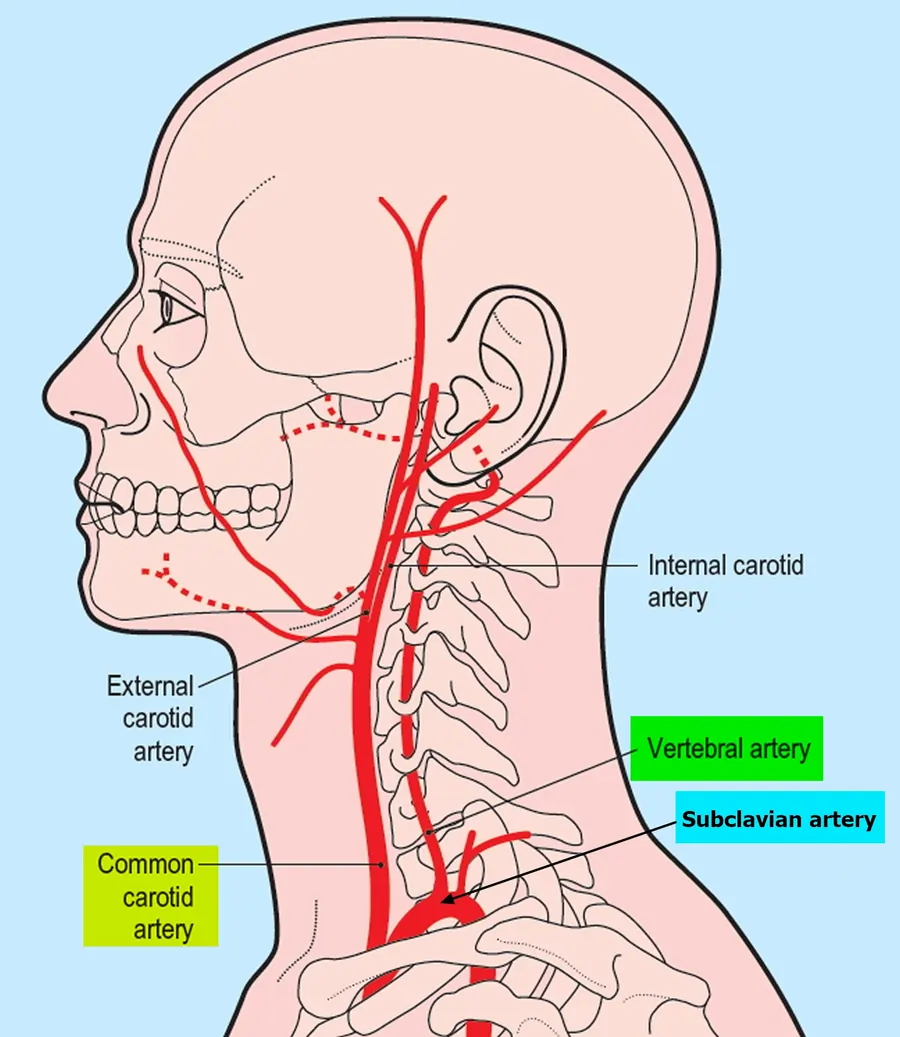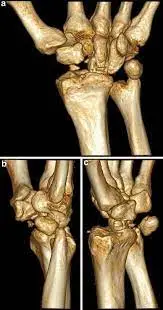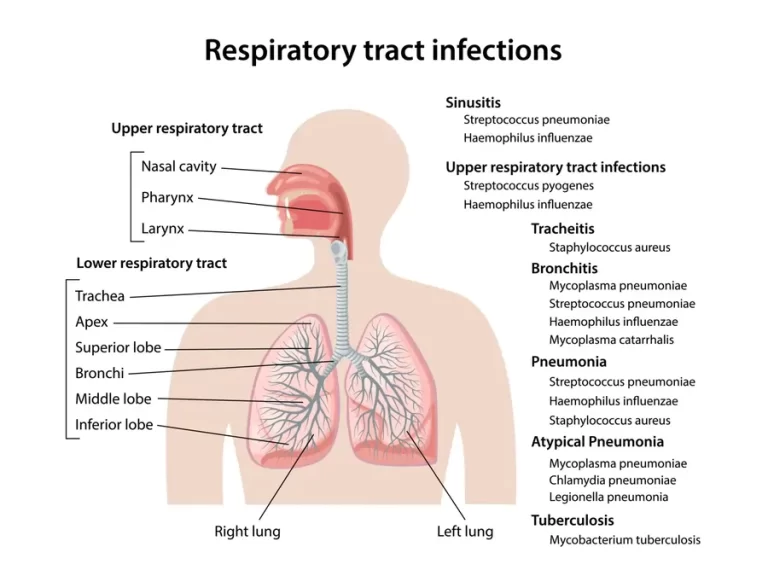Vertebral artery dissection
Table of Contents
What is vertebral artery dissection?
Vertebral artery dissection is a condition that involves a tear in the inner lining of the vertebral artery, one of the major blood vessels in the neck. The vertebral arteries are traveling to the brain for supplying blood to the brain. When a dissection occurs, blood can leak into the layers of the arterial wall, causing various complications.
Vertebral artery dissection is an infrequent cause of stroke in older adults. It is more usual in people younger than 45.
What is the vertebral artery?
- You have two vertebral arteries that run along the back of your neck close to your spine bones (vertebrae). They transfer oxygen-rich blood to your brain and spine.
The vertebral artery has 3 (three) layers:
- Intima, the inner layer closest to blood flow,
- Media, the middle layer that keeps blood flowing in the right direction,
- Adventitia is the outermost layer that gives the blood vessel structure.
How can vertebral artery dissection affect my health?
- With a dissection, blood gets trapped joining the intima and media. Blood that is not moving can form a clot, making a bulge that disrupts blood flow. It can also conduct to swelling (dilation) of the artery.
In most so many cases, vertebral artery dissection causes stroke:
- Ischemic stroke happens when a clot becomes large enough to block blood flow to your brain. Clots can also break off, proceed through your bloodstream, and get trapped in an artery downstream.
- A hemorrhagic stroke happens when a dissection affects all three layers of artery tissue. This causes blood to spill out of the artery rather than reaching your brain. If the dissection reaches the interior of your brain, this can cause bleeding into the space around your brain (subarachnoid hemorrhage) or into the brain itself.
Who gets vertebral artery dissection?
In certain people, vertebral artery dissection happens for no known reason. You may face a greater risk of dissection if you have certain health conditions, involving:
- Smoking,
- Cystic medial necrosis,
- Ehlers-Danlos syndrome
- Fibromuscular dysplasia
- High blood pressure (HBP) in the arteries supplying your lungs and heart (arterial hypertension),
- Marfan syndrome,
- Osteogenesis imperfecta,
- Polycystic kidney disease,
- Vasculitis.
Are there extra risk factors for vertebral artery dissection (VAD)?
- Injury can cause dissection. This can occur by retaining your neck in a hyper-flexed position (looking upward) for extended periods. It may also happen with sudden neck movements and trauma.
Activities and other situations that can conduct vertebral artery dissection involve:
- Car accidents,
- Chiropractic adjustment or deep tissue neck massage,
- Blowing your nose too hard,
- Practicing yoga where hyperextension of your neck happens,
- Painting a ceiling with your neck in an extended position for a prolonged time,
- Receiving cardiopulmonary resuscitation,
- Sneezing,
- Vomiting,
- Wrestling,
- Heavy weight lifting,
- Other causes of neck injury.
Can other types of artery dissection conduct to stroke?
- Cervical artery dissection involves tears in the arteries of your neck. These involve vertebral and carotid arteries. Your two carotid arteries move along with either side of your neck in the front. Dissection in either artery can repair blood flow and potentially because of a stroke.
What is the stroke risk?
- Your chances of experiencing a stroke are decreased. Vertebral and carotid artery dissections (VAD & CAD) account for only 2% of ischemic strokes. Most of the time, ischemic stroke is because of atherosclerosis (thickening of the artery from other risk factors, like smoking, high blood pressure, high cholesterol, and diabetes).
- Still, vertebral artery dissection is usual because of stroke in young and middle-aged adults. Up to 25% of stroke cases in this age group are because of vertebral artery dissection.
What are the symptoms of vertebral artery dissection?
- In earlier stages, you might not look symptoms. If the artery ruptures or a blood clot disturbs blood flow to your brain, you may experience signs of a stroke.
Symptoms involve:
- Ataxia (trouble with balance or coordination),
- Dizziness,
- Hearing loss,
- Double vision,
- Neck pain (usually one-sided),
- Severe headaches,
- Slurred speech (dysarthria),
- Vertigo.
How is vertebral artery dissection diagnosed?
- Magnetic resonance angiography (MRA) is the ideal diagnostic test. It combines magnetic resonance imaging (MRI) with angiography to catch personalized images of your vertebral arteries. This method enables healthcare providers (doctors) to fastly pinpoint the dissection and determine its severity and acuity.
- Magnetic resonance angiography (MRA) is a sophisticated test that is not widely available. Healthcare providers (doctors) can sometimes diagnose vertebral artery dissection (VAD) with a computed tomography scan or CT angiography. These are common among the 1st tests people receive.
- Sometimes, your healthcare provider (doctor) may recommend conventional angiography. This is a system where a provider (doctor) locates catheters (long, thin tubes) in either your wrist or groin. They will utilize contrast dye or X-ray-guided imaging to look at blood flow straightly to the artery itself along with the extent of the dissection or vessel injury in real-time.
How is vertebral artery dissection treated?
- Most dissections heal on their personal. To decrease the risk of blood clots, you may receive blood-thinning medications as a 1st-line therapy such as aspirin or aspirin- such as medications (Plavix), heparin infusion, or warfarin tablets. If the dissection extends your brain or there is a hemorrhagic stroke, then blood thinners may not be safe and secure. Your healthcare provider (doctor) may recommend alternative treatments.
What if standard therapies are not successful?
- You may require a procedure. This option is for people with hemorrhagic stroke.
Procedures for vertebral artery dissection involve:
- Endovascular embolization utilizes catheters (long, thin tubes) placed in either your wrist or groin to pierce the dissection and either apply an embolic agent or insert little metal coils. The agent or coils seal the abnormal vessel, curing blood from flowing through it.
- Intracranial (inside the brain) stenting utilizes catheters (long, thin tubes) placed in either your wrist or groin to approach the dissection or place a mesh, like metal device to reinforce the walls of the blood vessel. This may be appropriate for choosing people.
- Oftentimes, providers (doctors) perform angioplasty and stenting. Surgery may be necessary if you can not have an endovascular procedure as above. During surgery, healthcare providers (doctors) seal off the abnormal vessel utilizing tiny essence clips.
What is the prognosis for people with vertebral artery dissection (VAD)?
- Most people create a full recovery. Still, you may be at the possibility of future dissections. This risk reduces over time.
What is it like living with a vertebral artery dissection?
- You will require regular monitoring until healthcare providers (doctors) verify that healing has taken place. Monitoring typically involves magnetic resonance angiography (MRA) every three to six months. You may also require to continue taking a blood thinner during this time. Individuals facing a greater threat of future dissection will need follow-up care for numerous years.
Is there anything I should avoid later having a vertebral artery analysis?
You can still exercise yet should avoid the following:
- Push-ups and pull-ups or other same exercises where you support your body weight with your hands/arms,
- Lifting more than 25 to 30 pounds,
- Overhead lifting,
- Contact sports,
- Roller coaster rides,
- Chiropractor head/neck manipulation,
- Deep tissue massage on your neck,
- Sky diving,
- Other activities with rapid acceleration/deceleration changes,
- “Plank” position (yet otherwise safe to participate in yoga or Pilates),
- Any activities that could outcome in whiplash injury or extended periods of hyperextension of your neck.
Summary
- Vertebral artery dissection (VAD) happens when a tear forms in 1 of the blood vessels running up the back of your neck. On infrequent occasions, this can lead to stroke. Yet timely treatment, commonly blood thinners or a procedure, can save your life. Medical drugs and ongoing monitoring can assist people along with vertebral artery dissection (VAD) to avoid complications.
FAQs
Vertebral artery injuries can be due to blunt trauma, or penetrating trauma, or can happen spontaneously. The majority of vertebral artery injuries are because of blunt trauma from motor vehicle crashes. Falls, strangulation, and pedestrian accidents are less usual causes.
Both surgical and endoluminal approaches are options for treating vertebral roadway pathology, with the choice to join the two occasionally determined by the anatomic position of the lesion. Clinicians must rigorously balance the pitfalls of surgery versus the limitations of endoluminal intervention in former proceedings.
Patients with carotid or vertebral artery dissections (VAD) should keep away exercises like push-ups and sit-ups for 8 to 12 weeks later the acute dissection after which the recommendations would be the same as for SCAD.
Chronic repetitive stress injury may be under-appreciated because of potential vascular trauma. Here we extend the case of a patient who created vertebral dissection and posterior stroke later being continuously struck in the head by factory robots for so many months at work.
Patients with spontaneous internal carotid artery dissection (sICAD) importantly present with ipsilateral anterior headache or neck pain, Horner’s syndrome, cranial nerve palsies, and retinal or cerebral ischemia. Pain is the most frequent local symptom and sometimes the initial manifestation of SCAD.
An arterial examination can be as an outgrowth of head or neck trauma( moreover serious or minor), yet sometimes it has no recognizable cause.







